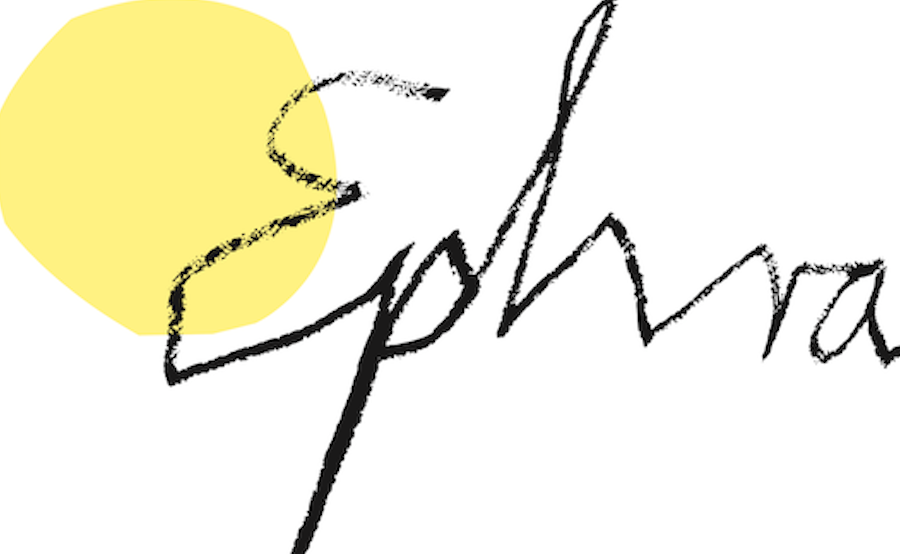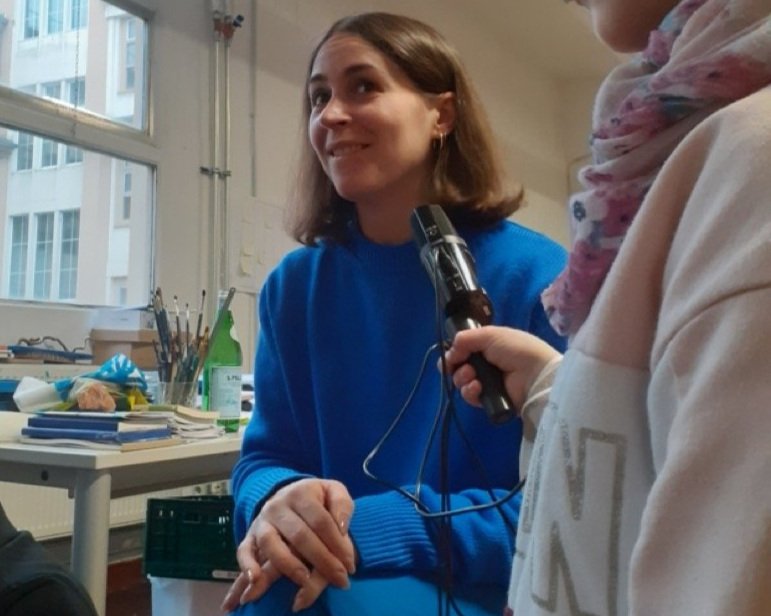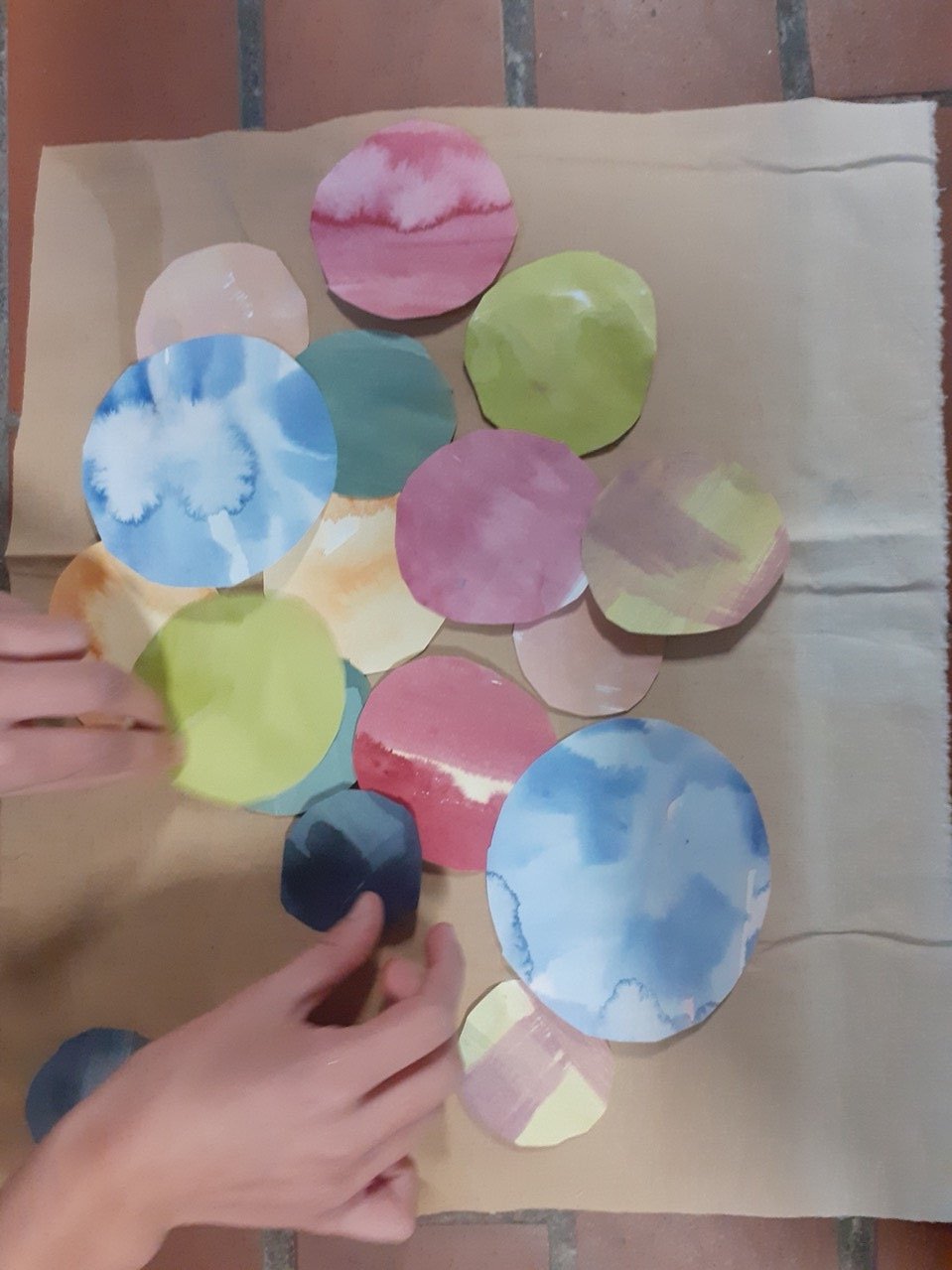Irene Fernández Arcas’ Art of Diversity
To find out artist Irene Fernández Arcas’ favourite colour, we don't even have to enter her studio: When she greets us in the hallway of a huge former factory building in Tempelhof, she is almost as radiant as the azure blue she is dressed in from head to toe. On this particularly cold December day, it feels like summer sky or glittering sea. The colour also appears everywhere in Irene's studio: on sketchbooks, shelves and, of course, in Irene’s art – for example, in the blue drawing that stretches across one of the large studio windows and immediately makes the view of the grey courtyard seem much less dreary.
Irene knew she wanted to become an artist when she was a little child; she has always loved to paint and draw. After leaving school, however, she first studied journalism and photography in her home country Spain before coming to Berlin to study fine arts. Looking around Irene's studio, painting and drawing are still a very big part of her practice. In a small presentation, she shows us that she often doesn't just hang the painted fabrics on the wall as canvases, but builds tents out of them, for example. In them she installs small altars and a wide variety of painted objects such as cushions and dishes, but also plants and fruits. Irene likes her tents, they give her a feeling of protection and security. She loves our idea that there should always be one on display somewhere in Berlin, so that she can retreat to it at any time.
What Irene particularly likes about art is when it brings people together. For example, in the theatre, at performances or while dancing. Dancing and painting are close to each other for Irene anyway: she usually doesn't paint at the easel, but spreads out paper or fabric on the floor and then works on it with dissolute movements. It feels a bit like dancing. The idea of communality is expressed in Irene’s performative actions, for example in the form of collective rituals. Rituals are actions that always take place in a similar way and often have a spiritual meaning, such as weddings or meditations. But there are also everyday rituals such as regular walks, brushing one’s teeth in the morning or eating together. Irene especially likes to organise large dinners with many people. She then combines these with her painting, which decorates the room and the objects carefully arranged on the table. Irene finds the connection between art, ritual and community important and healing.
We think that sounds like great fun and ask Irene if she is happy to have become an artist. Irene nods thoughtfully, but explains to us that being an artist often means actually having too little time to make art. There are always so many things to do that aren't much fun like writing emails, organising things or applying for funds. Luckily, she has had an assistant, Alina, for two months to help her with these things! In addition, being an artist is often associated with great uncertainties, as there is usually no regular salary and it is therefore difficult to plan both one’s professional and private life.
Despite these uncertainties, Irene does not let herself be dissuaded from continuing to make art. For her personally, she also calls art a “health trick”, because it allows her to process and express thoughts, feelings and things she has experienced. For example, art once helped her when she lost a person who was very important to her. By making art, she was able to deal with the great sadness better. But you can also share happiness and joy with others through art, and that is what Irene intends to do with us today.
Alina has prepared large papers for us that are painted with a special colour (it is called sublimation paint). We cut out different shapes from these papers and then arrange them on small squares of fabric, creating deliberate motifs and wild patterns. We then place our squares one by one on a hot press (we have to be especially careful here), which looks a bit like an overgrown sandwich maker. As soon as the press is closed, we anxiously follow the countdown that is shown on a small display: We have to wait one minute until we can open the shutter again. The last seconds are counted down in chorus. Out comes a silky fabric printed with the laid motif. The colours shine much brighter than before on the paper! We are allowed to take the individual prints home, but Alina and Irene each make a second print on a long piece of fabric, so that a colourful scarf is created from a wide variety of colours and shapes. This collaborative work of art looks particularly impressive in the end and we understand well why Irene prefers to make art together with many people – diversity may sometimes lead to a bit of chaos, but also to a special beauty!








